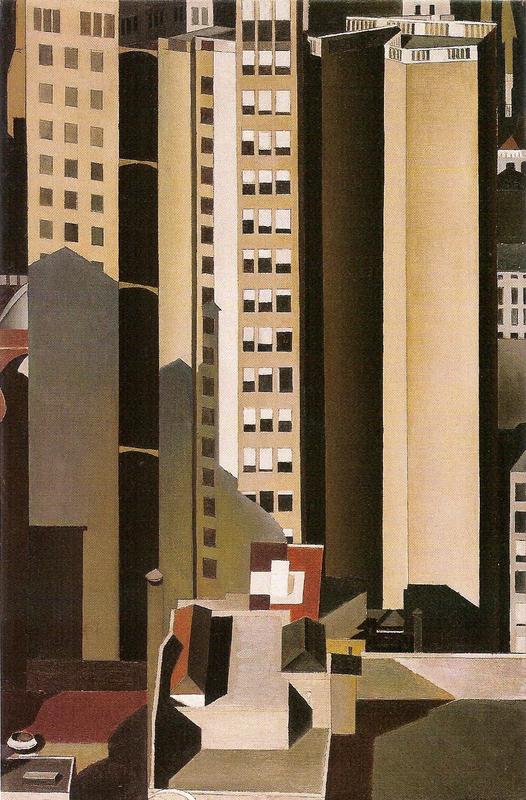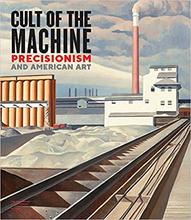More about Skyscrapers
- All
- Info
- Shop

Contributor
Charles Sheeler’s Skyscrapers blends the abstract qualities of inner-city architecture with photographic sensibilities on a canvas.
Sheeler literally said “What if I painted a photograph?” and then did just that.
It’s easy to look at Skyscrapers in the 21st century and quickly understand what you’re looking at. We’ve lived in a post-industrial society our entire lives and we see things like the view in this painting on our lunch break at work.
But in 1922, when Sheeler painted Skyscrapers, that wasn’t the case for everyone. Sure, a lot of people would still recognize a view like this back in the early 20th century as well. But tall buildings were still relatively new back then. They were being built at an increasingly fast rate, but they were a newer concept nonetheless. Alongside artists like Charles Demuth and Georgia O'Keeffe, who were documenting the rapid changes industry made to the American landscape in works like Incense of a New Church and East River from the Shelton Hotel, Sheeler was part of the Precisionist movement, a uniquely American movement characterized by a sleek, hard-edged style that sought to emulate the machine-made qualities of the industrial subject matter it depicted.
Sheeler was particularly enamored by the type of environment that numerous tall buildings created. That’s why in 1920, just two years before he made this painting, he teamed up with Paul Strand, a contemporary photographer, and made a short film called Manhatta. In the film, Sheeler and Strand write a visual love letter to New York’s bustling city and domineering architecture. The stunning cinematography is contrasted by poems by Walt Whitman.
Clearly inspired by how he and Strand documented the city in Manhatta, Sheeler began to prepare for what would eventually become Skyscrapers by photographing the Equitable Building, which he would then sketch. Doing this made it possible for Sheeler to capture the likeness of the building with that much more detail.
He did a pretty good job, too. Not just because I say so. But he actually sold this painting just a few years after it was completed. In 1926, Duncan Phillips purchased the painting for $400. And it resides in that collection to this day.
Remember, this was almost 100 years ago. While $400 wasn’t enough to break the bank even then, it definitely went a longer way than that much would today. If you only had $400, you probably weren’t losing any sleep. The bigger thing to focus on is that Sheeler actually sold this while he was alive, actively rejecting that you have to starve and die for your art to be recognized and for you to be able to afford a sandwich. What an inspiration.
Other than just being a really cool moment captured on canvas, Skyscrapers represent the abstract nature that living and moving around within a number of tall buildings feels like. It’s even noted as being an inspiration for other American artists of the time and how they incorporated buildings and architecture into their paintings.
We don’t think much of it because we’re used to it, but when we take our lived context out of it, it’s kind of daunting. These buildings are these gigantic, menacing entities. But they’re also beautiful. They’re made up of rigid shapes and sharp lines and when you stop to take a look at them in their eternal fixed state, you might just catch a glimpse like the one Sheeler captures in Skyscrapers. Though completely devoid of perceived human life, there’s still some kind of living quality that we discern from them.
Sources
- Guner, Fisun. “Listed: 10 American paintings before Pollock“. The Arts Desk. February 16, 2014. https://theartsdesk.com/visual-arts/listed-10-american-paintings-pollock
- The Art Story. “Charles Sheeler Artworks”. Accessed October 20, 2020. https://www.theartstory.org/artist/sheeler-charles/artworks/#nav
- Troyen, Carol. “Photography, Painting, and Charles Sheeler's View of New York” Mutual Art. December, 2004. Accessed October 19, 2020. https://www.mutualart.com/Article/Photography--Painting--and-Charles-Sh…












